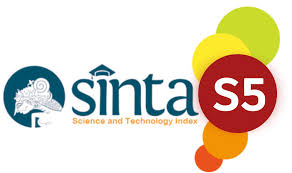Unlocking market share growth: The role of service facilities and financial performance in Islamic Banks
DOI:
https://doi.org/10.54957/jolas.v5i1.1312Keywords:
Financial Performance, Islamic Bank, Market Share, ROA, Service FacilitiesAbstract
Indonesia, as the country with the largest Muslim population in the world, reaching 237.6 million people or 86.7% of its total population, presents a unique potential for Islamic banking. However, the market share of Islamic banks remains surprisingly low at only 7.09%. This study aims to analyze the impact of service facilities and financial performance on the market share of Islamic banks in Indonesia. Employing panel data regression analysis with Stata software at a 5% significance level, this research reveals that the number of service offices positively and significantly influences the market share, while the Operating Cost to Operating Income (BOPO) ratio has a significant negative effect. Conversely, variables such as the number of ATMs, Return on Assets (ROA), Capital Adequacy Ratio (CAR), Non-Performing Financing (NPF), and Finance to Deposit Ratio (FDR) show no significant impact. These findings provide valuable insights into the factors shaping the market share of Islamic banks and underline the importance of optimizing service facilities and financial efficiency to enhance their competitive position.
References
Al Arif, MNR, & Rahmawati, Y. (2018). Determinant factors of market share: Evidence from the Indonesian Islamic banking industry. Problems and Perspectives in Management , 16 (1), 392–398.
Aminah, Soewito, Erina, N., Khairudin, & Damayanti, T. (2019). Financial performance and market share in Indonesian Islamic Banking: Stakeholder theory perspective. International Journal of Scientific and Technological Research , 8 (1), 14–18.
Anik, Salmia, & Prastiwi. (2022). The Influence of Internal Factors and Macroeconomic Factors on the Market Share of Indonesian Islamic Banks. Scientific Journal of Islamic Economics , 8 (02), 1832–1839.
Ariandhini, J. (2019). The Influence of Corporate Governance on the Profitability of Indonesian Islamic Commercial Banks (BUS) for the Period 2011-2016. Falah: Journal of Islamic Economics , 4 (1), 98.
Aulia, I. (2023). Characteristics of Banking Against Sharia Market Share in Indonesia. SEIKO: Journal of Management & Business Influence , 6 (1), 345–351.
Barron, JS. (2019). The ATM Is Critical To Driving Financial Inclusion . CashEssenstals. https://cashessentials.org/the-atm-is-critical-to-driving-financial-inclusion
Brigham, E. F., & Houston, J. F. (2017). Dasar-Dasar Manajemen Keuangan. In 1 (14th ed.). Salemba Empat.
Desil, IM, & Amri. (2020). Factors Influencing the Increase in Market Share of Islamic Commercial Banks (BUS) in Indonesia. Scientific Journal of Islamic Economics Students , 2 (1), 18–31.
Fatihin, MK, Siswahto, E., Rusgianto, S., & Hadi, NH. (2020). The Impact of Macroeconomics and Financial Performance on the Market Share of Islamic Banking in Indonesia. Journal of Economics , 25 (1), 51.
Fitriyani, & Nurdin. (2018). Analysis of the Influence of Financial Performance Factors and Technology Aspects on the Market Share of Islamic Banking in Indonesia for the Period 2011-2017. Management Proceedings , 4 (2), 790–797.
Fuadah, N., & Hakimi, F. (2020). Financial Performance and Market Share at Indonesian Islamic Foreign Exchange Commercial Banks: Stakeholder Theory Perspective. IPTEKS Research Journal , 5 (2), 180–186.
Hanafi, SM. (2021). Determinant of Market Share in the Indonesian Islamic Banking Industry. Muqtasid: Journal of Islamic Economics and Banking , 12 (1), 1–16.
Hanafia, F., & Karim, A. (2020). Analysis of CAR, BOPO, NPF, FDR, NOM, and DPK on Profitability (ROA) at Islamic Banks in Indonesia. Target: Journal of Business Management , 2 (1), 36–46.
Harjito, Y., Utami, DB, & Hapsari, DI. (2017). Analysis of Islamic Banking Market Share in Indonesia. XX National Accounting Symposium , 1–21.
Kumrotin, E. L., & Susanti, A. (2021). Pengaruh Kualitas Produk, Harga, Dan Kualitas Pelayanan Terhadap Kepuasan Konsumen Pada Cafe Ko.We.Cok Di Solo. J-MIND (Jurnal Manajemen Indonesia), 6(1), 1. https://doi.org/10.29103/j-mind.v6i1.4870
Lasrin, DA, Hidayati, S., & Permadhy, YT. (2021). Analysis of Financial Factors Affecting Islamic Banking Market Share in Indonesia. CORRELATION: National Research Conference on Economics, Management, and Accounting , 2 (2), 728–743.
Ludiman, I., & Mutmainah, K. (2020). Analysis of Market Share Determinants of Islamic Banking in Indonesia (Empirical Study on Islamic Commercial Banks and Islamic Business Units Registered with OJK for the Period March 2017 to September 2019). Journal of Economic, Management, Accounting and Technology , 3 (2), 169–181.
Melina, D., Gurendrawati, E., & Armeliza, D. (2022). The Influence of Financial Performance on the Market Share of Islamic Banking in Indonesia. Journal of Accounting, Taxation, Auditing , 3 (3).
Morris, Richard D. (1987). "Signalling, agency theory and accounting policy choice." Accounting and business Research 18 (69): 47-56.
Nasuha, A. (2020). Analysis of Financial Performance Affecting Market Share of Sharia Banking in Indonesia. Journal of Indonesian Applied Economics , 8 (1), 32–36.
Parasuraman, A., Ziethaml, V. A., & Berry, L. L. (1988). SERVQUAL: A Multiple Item Scale for Measuring Consumer Perceptions of Service Quality. Journal of Retailing, 62(1), 12–40.
Rokhlinasari, S. (2015). Teori –Teori dalam Pengungkapan Informasi Corporate Social Responbility Perbankan. Al-Amwal : Jurnal Kajian Ekonomi Dan Perbankan Syari’ah, 7(1), 1–11.
Rosestino, YD, & Kusumaningtias, R. (2022). The Influence of Islamic Corporate Governance, Core Capital, and Number of Service Offices on the Market Share of Islamic Commercial Banks in 2016-2020. Jae (Journal of Accounting and Economics) , 7 (2), 88–99.
Sabatini, K., & Sudana, I. P. (2019). Pengaruh Pengungkapan Corporate Social Responsibility Pada Nilai Perusahaan Dengan Manajemen Laba Sebagai Variabel Moderasi. Jurnal Ilmiah Akuntansi Dan Bisnis, 14(1), 56–69. https://doi.org/10.24843/jiab.2019.v14.i01.p06
Siregar, ES. (2019). Analysis of the Influence of Internal and External Factors of Islamic Banking on the Market Share of Islamic Banking Assets in Indonesia. Zhafir | Journal of Islamic Economics, Finance, and Banking , 1 (1), 39–50.
Sitorus, M., & Pangestuti, IRD. (2016). Analysis of the Influence of ROE, ROA, EPS, DPS, DOL, and DFL on Market Value Added in the Manufacturing Industry at the IDX in 2011-2014. Diponegoro Journal of Management , 5 (3), 1–13.
The Royal Islamic Strategic Studies Centre. (2022). The Muslim 500:The World's 500 Most Influential Muslims 2023. In The Royal Islamic Strategic Studies Center . https://themuslim500.com/download/
Wibisono, MY, & Wahyuni, S. (2017). The Effect of CAR, NPF, BOPO, FDR, on ROA Mediated by NOM. Journal of Business & Management , 17 (1), 41–62.
Zeithaml, Valarie A. (1990). "Delivering quality service: Balancing customer perceptions and expectations." New York: The Free Press.
Zuhroh, I. (2022). Profitability of Islamic Banks in Indonesia: How Do Capital, Inflation and Birate Affect? Journal of Accounting and Finance Review , 12 (2), 383–399.
Downloads
Published
How to Cite
Issue
Section
License
Copyright (c) 2025 Belinda Nurfadila, Agus Maulana

This work is licensed under a Creative Commons Attribution 4.0 International License.











